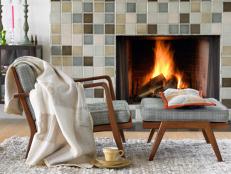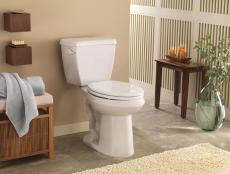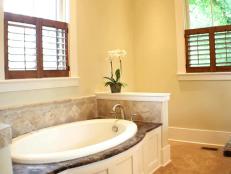1 / 11
Give Your Bathroom Salvaged Style
In order to give this remodeled Atlanta bathroom one-of-a-kind designer flair, a dining room console table was repurposed as a dual sink vanity. Although many designers suggest repurposed case goods into custom vanities, there are important factors to keep in mind before doing so.












